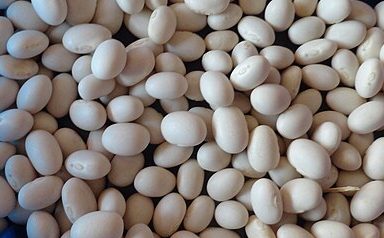A lag in the ongoing 2024-25 harvest won’t deter Brazil’s soybean crop from tipping the annual production scale.
According to consultancy Pátricia Agronegócios courtesy Grain Central, 27.2% of the reaping was over February 14, 2025, a 10.5% weekly gain but a 3.4% yearly drop.
Though harvesting amid sporadic rain is a throwback to the April 2024 flooded harvest, it is not hampering progress. This is despite the harvest mark on the week ending February 17 lagging at 15.1% versus the 18.4% of the corresponding 2023-24 season.
The February 14 progress nevertheless equals the timeline’s average since 2019 of 28.5%, and thus foreshadows a record crop.
States Doing Well
Internally, all states are showing gains ahead of the national pace, although still behind last year’s tallies.
Matto Grosso in central-west Brazil for one had reaped 65.2% of its crop mid-February versus 76.4% a year ago. The state accounts for 25% of the national crop and is a major determinant of overall output.
Paraná in the south, on the other hand, was a little ahead of the national progress at 38% by the 14th.
Record Crop
Eventually, the national harvest could match the U.S. Department of Agriculture (USDA)’s forecast of 169 million tonnes.
Another forecast by industry consultancy Agroconsult has placed the harvest at 171.3 million tonnes. This is a slight bump from the earlier estimate by the same consultancy of 172.4 million tonnes.
Down memory lane, Brazil reaped 153 million tonnes of soy in the 2023-24 season, which solidified its world production lead.
Only the United States, which accounts for 33% of the world’s production and Argentina with 17% rival Brazil’s top share.
This lead could extend after an annual acreage expansion in the 2024-25 season by 1.3 million hectares.
In its part, neighbor Argentina expects uptick production at 49 million tonnes, a 790,000-tonne increase, year-on-year.
Ultimately, despite dragging start, the soy harvest in the world’s biggest producer is shaping up into a record crop. To learn more about Brazil’s soy and its place in the world, skim the statistics below.
Brazil Soybean Statistics
Brazil provides an average 35% of the global soybean output per year, the highest of any country. The ensemble of the top 3 world producers of Brazil, the U.S. and Argentina accounts for 80% of worldwide supply. China, an emerging soy producer, in its part accounts for some 5% of the global harvest.
Brazil’s soybean production peaked in the 2023-24 market year after yearly fluctuations while soybean oil processing fell drastically in 2022. Acreage, on the other hand, has been increasing yearly since 2019 by more than 1 million hectares. In the 2024-25 season, the cultivated area had ticked up to 47.4 million tonnes, a five-year high.
The data below from FAOSTAT illustrates the 5-year production and acreage trends for Brazil’s soybean/soybean oil.
Soybean Production 2019-2023
| Year | Production [soybeans in tonnes] |
| 2023 | 152,144,238 |
| 2022 | 121,290,103 |
| 2021 | 134,799,179 |
| 2020 | 121,820,949 |
| 2019 | 114,316,829 |
Soybean Oil Production 2019-2022
| Year | Production [soybean oil in tonnes] |
| 2019 | 11,263,345 |
| 2020 | 10,597,620 |
| 2021 | 11,099,013 |
| 2022 | 8,734,543 |
Soybean acreage: 2019-2023
| Year | Acreage [soybeans in Ha] |
| 2023 | 44,447,552 |
| 2022 | 41,050,906 |
| 2021 | 39,126,269 |
| 2020 | 37,191,638 |
| 2019 | 35,895,207 |
